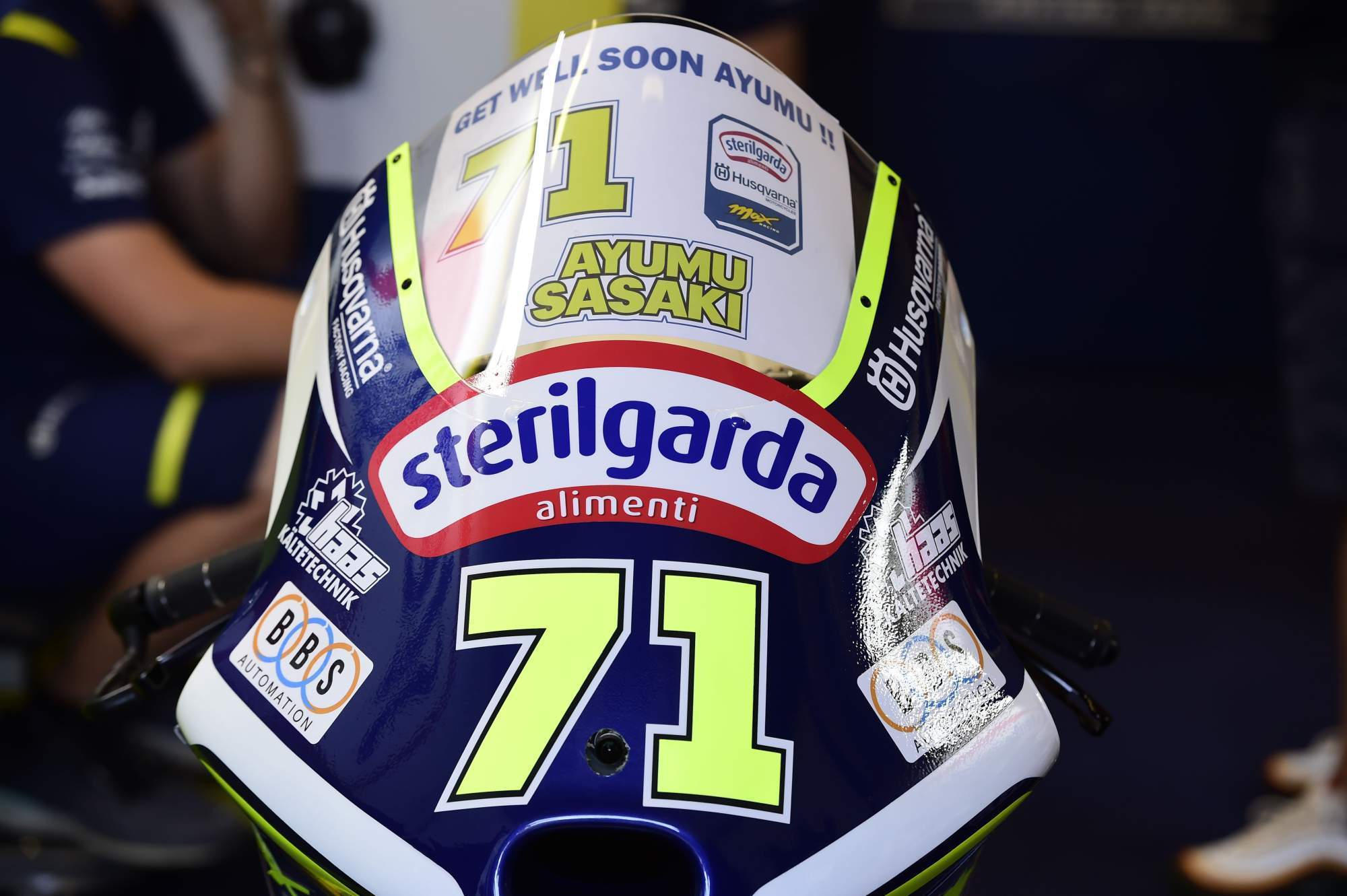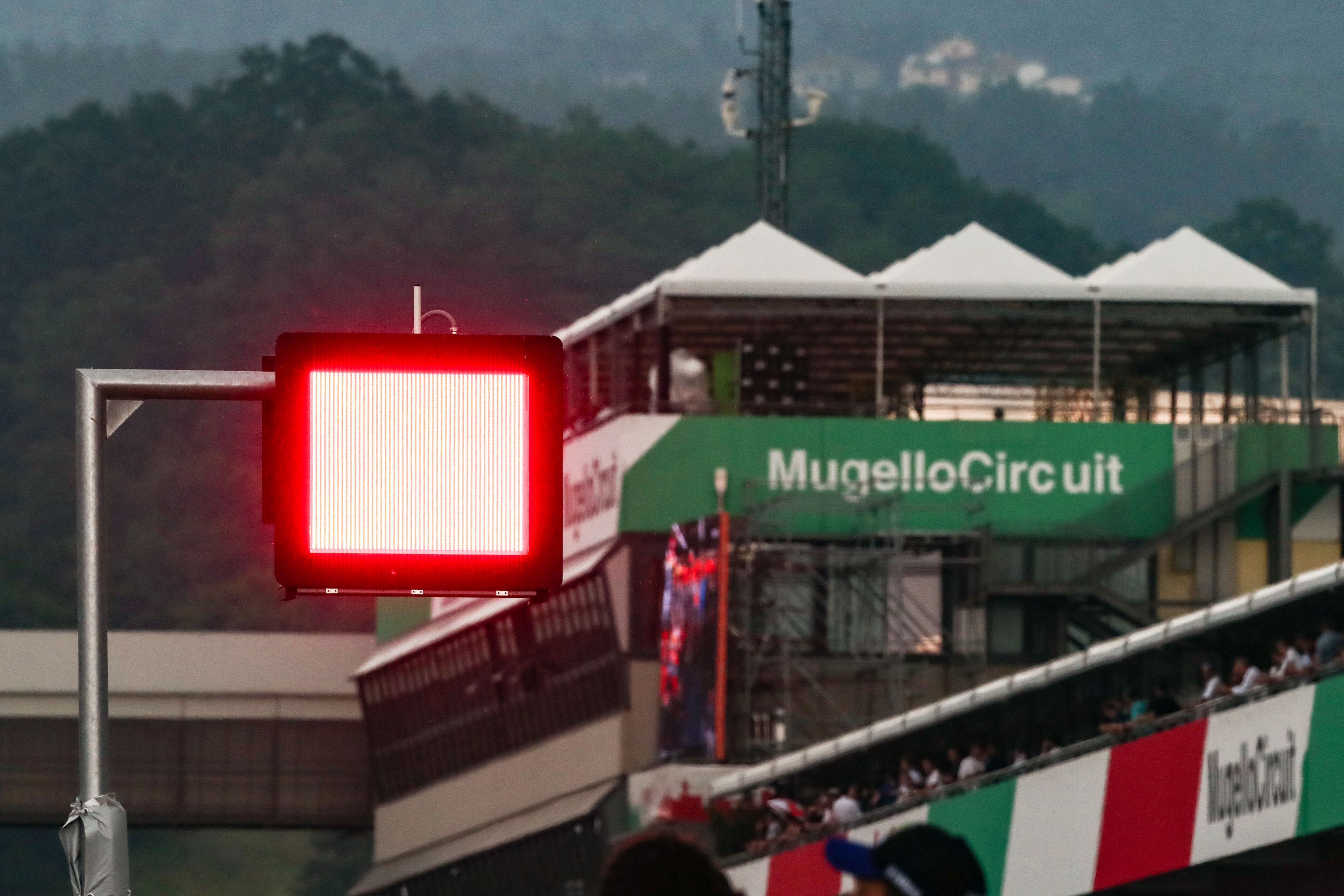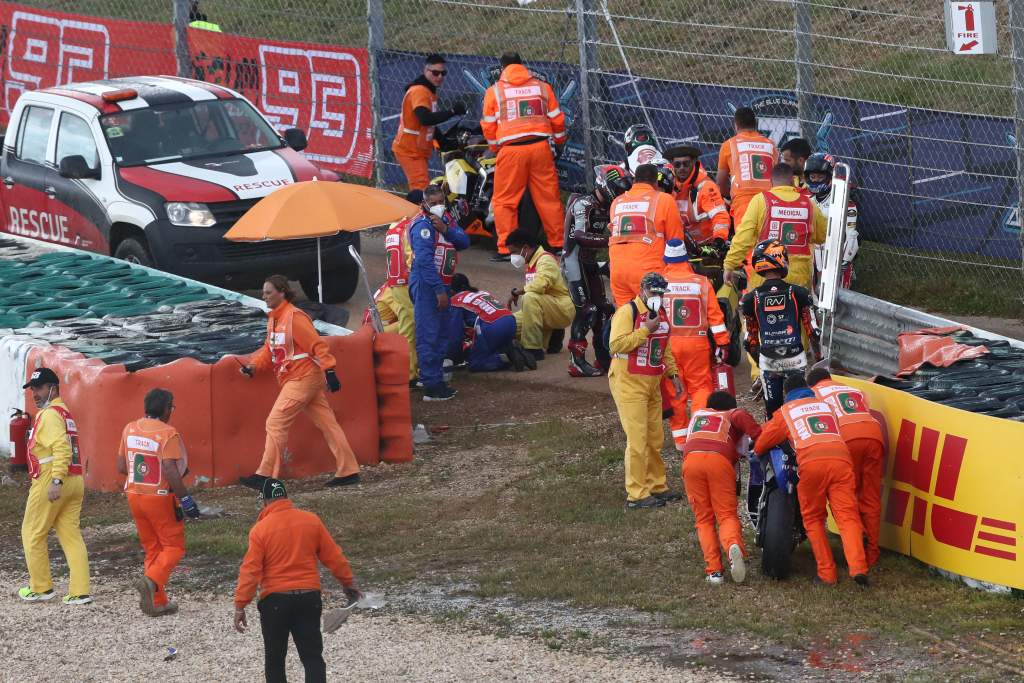You would think in modern-day MotoGP, in an era where safety has never been more important, that the single-most important consideration at all times would be rider safety.
Yet the ongoing aversion to using red flags this season brings that into question.
Thankfully, it’s rare that there is a crash serious enough to require a race or a session to be stopped. But that doesn’t mean that it never happens.
Two examples, in particular, stand out from 2022 so far, albeit both in the smaller classes – perhaps not surprising given the number of race control controversies that relate to Moto3 in particular.
At the Italian Grand Prix in May, Japanese rider Ayumu Sasaki suffered a high-side during practice, landing in the middle of the Mugello track before then being struck by an oncoming machine – the exact same circumstances that led to the tragic death of Jason Dupasquier at the same circuit 12 months prior.
Needing medical assistance at the side of the track for what was later diagnosed as a concussion and two broken collarbones, Sasaki and the other riders involved (two more fell after striking him and his machine) spent four minutes in the gravel trap as the medics and marshals worked with them.
Despite Sasaki and the medics being directly in the firing line should another rider have a similar incident, however, the whole event took place under waved yellow flags. And past experience in MotoGP shows riders no longer feel compelled to slow down significantly for yellows or expect there to be consequences if they don’t.

Then, at the German Grand Prix three weeks later, there was another multiple bike crash in the same class, when British racer Scott Ogden crashed out and took Italian Matteo Bertelle with him.
With both riders both lying again in the firing line and both requiring stretchers to leave the track, the race carried on around them.
Bertelle, in particular, was eventually removed from the side of the track not by a medical team with a stretcher but by a lone medic dragging him clear, such was the dangerous spot he had landed in. It was something that would send most race doctors into an apoplectic rage given the risk of spinal injuries.
There was also, of course, what happened in the Moto2 race at the Portuguese Grand Prix, when the rain began to fall.
Instead of the race being stopped immediately, the red flags only appeared after most of the leaders had fallen, leaving title contender Aron Canet with a broken arm and handing a massive points advantage to Celestino Vietto, who was uncompetitive up until that point in the race but was able to take victory because most of his rivals were unable to restart.
In all three cases, The Race contacted Dorna to ask for an explanation of the decision to keep the session/race running rather than using the red flag. A ‘no comment’ was given on each occasion.

Speaking as a cynic, it’s easy to see why putting out the red flag in the Portimao and Sachsenring incidents, in particular, would have been a headache for the series bosses. Restarting a red-flagged race, even with MotoGP’s quick-restart procedure, is a long job, taking at least 20 minutes.
That in turn knocks on throughout the rest of the day, even if the restarted races are subsequently shortened. It often affects the TV schedule for the main event, knocking back the start time and meaning that some broadcasters will be forced to cut their coverage short while others will need to cut off later programming.
There is what seems to be a ready-made solution to this problem in other series: the use of a safety car, like the domestic British Superbike championship uses, or at least a virtual version of it, as used as an alternative to the physical safety car in car series including Formula 1.
However, with MotoGP’s ultra-stiff and temperature-dependent Michelin tyres being designed for one thing and one thing only (unlike say BSB’s road tyre-derived Pirellis) introducing a safety car could be just as dangerous as the current system.
We often see riders crashing out of qualifying sessions in particular after slowing down for a lap to secure a better track position and allowing their Michelin rubber to cool down too much in the process – something that would be exacerbated by an order of magnitude if they were forced to spend a number of laps behind a safety car.
Maybe the ‘slow zone’ concept used in many sportscar championships – effectively the application of a VSC situation in one sector of the track only – could be an answer, but it’s not believed to have been mooted in MotoGP circles.
With those points considered, it’s all the more important that MotoGP uses the tool that it has at its disposal right now: red flags.
In a series with so many inherent risks, safety simply has to be the only priority. Not stopping sessions and races when riders have been left in dangerous situations doesn’t just potentially risk their lives but those of the volunteer marshals and medics there to help them. Delaying the day’s programming with a few red flags is a very small price to pay to avoid that.







